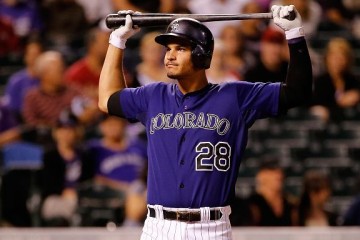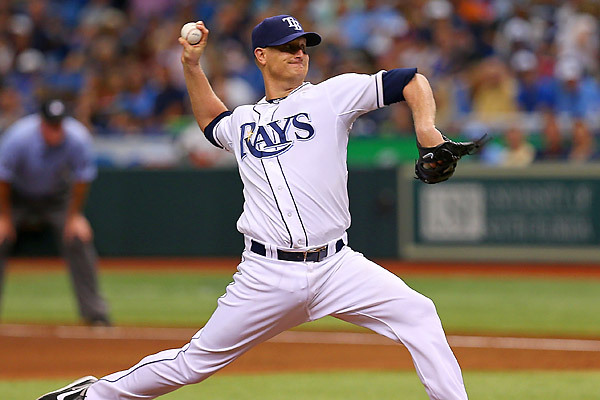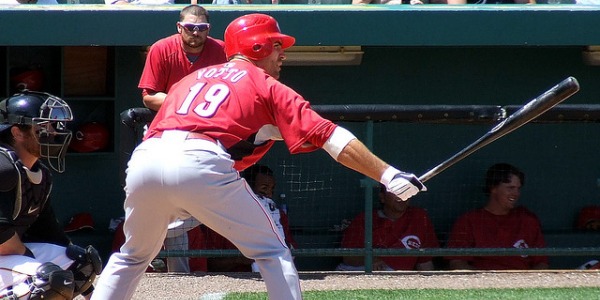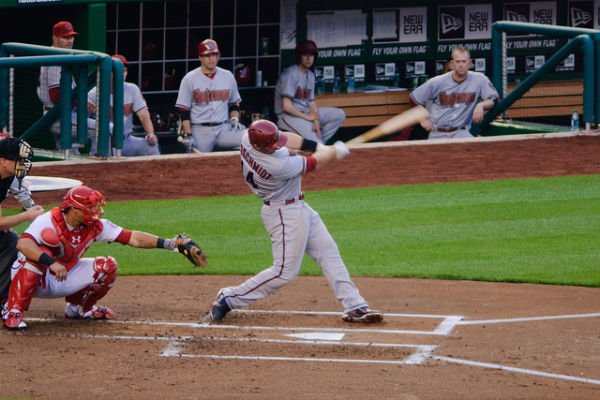2014 Fantasy Baseball: How Important is the Strikeout?
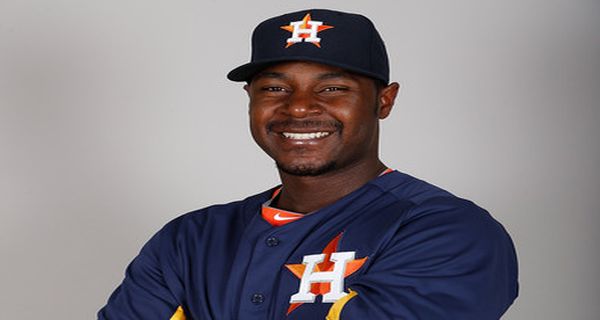

One the great debates that has occurred over the last several years is the importance of the strikeout. Traditionalists and analytical thinkers have gone back and forth on whether the strikeout is bad for hitters or simply another out. A quick perusal through the game’s history shows ebs and flows on the particular strength of the strikeout. Naturally, fantasy players are usually more concerned with strikeouts from the pitcher’s perspective, but strikeouts have always been a zero sum game. If a pitcher is striking out hitters, then there will be hitters with a lot of strikeouts.
Enter Chris Carter of the Houston Astros and Mark Reynolds of the Milwaukee Brewers. The two of them have combined to turn in the most prolific strikeout campaigns in the league’s history. Before them, there were guys such as Rob Deer and Dave Kingman. The funny thing is that their careers lasted a long time even though they never hit for high average and were always among the league leaders in whiffs.
A quick look at Carter and Reynolds numbers indicate that they continue to get playing time even though they strike out an alarming amount of the time. That being said, not all strikeouts are created equal. When we look beyond the basic numbers and look more directly at the plate discipline numbers we will see why these guys are striking out as often as they are.
|
PA |
SO% |
AVG |
HR |
R |
RBI |
BB% |
|
|
Chris Carter |
176 |
30.7 |
.192 |
6 |
16 |
17 |
9.7 |
|
Mark Reynolds |
164 |
32.9 |
.214 |
11 |
17 |
23 |
10.4 |
It is clear that Carter and Reynolds aren’t your daddy’s free swingers. Both have walk rates above the league average. Even if they aren’t far above the league average, it is clear that they are more selective than the strikeout percentages would indicate. Now, whether these players have value to their teams is open to considerable debate. Many traditionalists would look at their strikeouts and their batting averages and beg off. Others would look at the other numbers and conclude that while flawed, they do bring something to the table.
The debate over strikeouts goes back to the point of whether some outs are more productive than others. If that is the case, then how would we define such a breakdown. Obviously, double plays would be the least valuable and strikeouts with men in base would definitely fall pretty low on the list. We want to advance runners whenever possible, but can a strikeout have a positive value?
What about the hitter that takes a lot of pitches and therefore strikes out after seeing five, six, or even seven pitches. Those pitches add up and tax the starting pitcher. That out might be more valuable than the hitter that grounds out on the second or third pitch tossed. We won’t be breaking down Carter and Reynolds to that level, but we do have some pretty advanced statistics that can at least partially answer some of these questions.
|
Oswing |
ZSwing |
Swing% |
Contact |
SwStr |
|
|
Chris Carter |
31.5 |
71.7 |
49.0 |
63.9 |
17.0 |
|
Mark Reynolds |
29.4 |
70.9 |
49.2 |
64.5 |
17.0 |
|
League AVG |
29.4 |
65.0 |
45.9 |
79.4 |
9.2 |
Carter’s nickname in Houston has become Khris Karter. The implication is pretty readily apparent. However, when looking at the plate discipline numbers we notice a number of things when compared to the league average. The Oswing rate is the rate of swings on pitches outside the strike zone. Apparently, both Carter and Reynolds are right around the league average in that category.
If anything, there is a bigger discrepancy on the pitches they swing at in the zone (ZSwing). Coupled with the Swing percentage we notice that they simply swing at more pitches and miss those pitches more often than the average hitter. This is where the definition of plate discipline should be clarified so we can tell the difference between pitch recognition and the simple ability to hit the pitch.
Both Reynolds and Carter are around the league average in recognizing the difference between strikes and balls (true plate discipline) but fail when it comes to actually hitting the balls in the zone. That could be for any number of reasons, but none of those reasons have anything to do with plate discipline. They might just have an underdeveloped hit tool or they may be going for the long ball on each and every swing. Either way, their strikeouts aren’t due to a lack of discipline as many might perceive.
While their strikeouts might be explained, this doesn’t immediately answer whether these players are valuable. In this situation, I like to combine batting average and secondary average into one working number. When we average the two together we get one number that is similar to batting average, but more accurately represents what the player brings to the table. Secondary average includes everything that batting average does not: power, patience, and speed.
Reynolds may be hitting .214, but his secondary average stands at .372. If we average those together we get a .298 real offensive value. Compared to other corner infielders that might not be great, but it is certainly passable. Carter’s secondary average is “only” .308, so that ends up giving him a cool .250 ROV. Obviously, that is more borderline and therefore Carter probably is not going to be of much value to you.
Then again, he does have a .247 BABIP as of Memorial Day. If that picks up to somewhere closer to even his career average (.286) then you would be looking at a much more viable fantasy player. Of course, that is only if he is allowed to continue. The longer he hits under the Mendoza line the more likely he is going to be replaced.


